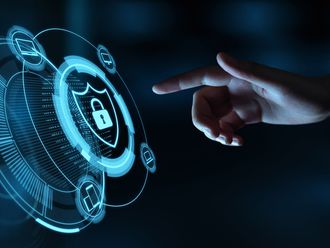
Colombo: Fresh protests erupted in Sri Lanka’s capital on Tuesday, defying a government curfew after five people died in the worst violence in weeks of demonstrations over a dire economic crisis.
Demonstrators showed no sign they would back down, even after scores were injured when government supporters were bussed into Colombo on Monday, and attacked protesters with sticks and clubs.
As outrage over the incident soared, prime minister Mahinda Rajapaksa resigned - but even that has failed to calm public anger, with his brother Gotabaya still president with widespread powers and command over the security forces.
Thousands of angry protesters stormed Mahinda’s official residence overnight, and the former premier had to be rescued in a pre-dawn military operation on Tuesday, firing tear gas and warning shots.
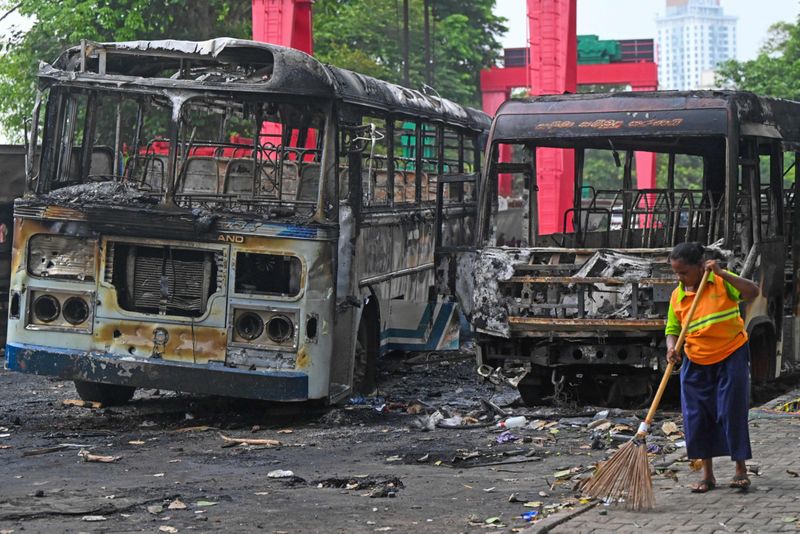
“At least 10 petrol bombs were thrown into the compound,” a top security official told AFP.
Speaking to AFP, protester Chamal Polwattage said: “More people are coming to the demonstration site after the emergency and curfews.
“People are angry about the attacks launched against us yesterday. Despite the curfew since yesterday afternoon, we have a lot of volunteers bringing food and water for us,” the 25-year-old said.
“We will not go until the president goes,” he added.
Grip on power
The Rajapaksa clan’s hold on power has been shaken by months of blackouts and shortages in Sri Lanka, the worst economic crisis since it became independent in 1948.
But Monday’s attacks on the protests represented a turning point after weeks of peaceful demonstrations.
“We were hit, the media were hit, women and children were hit,” one witness told AFP, asking not to be named.
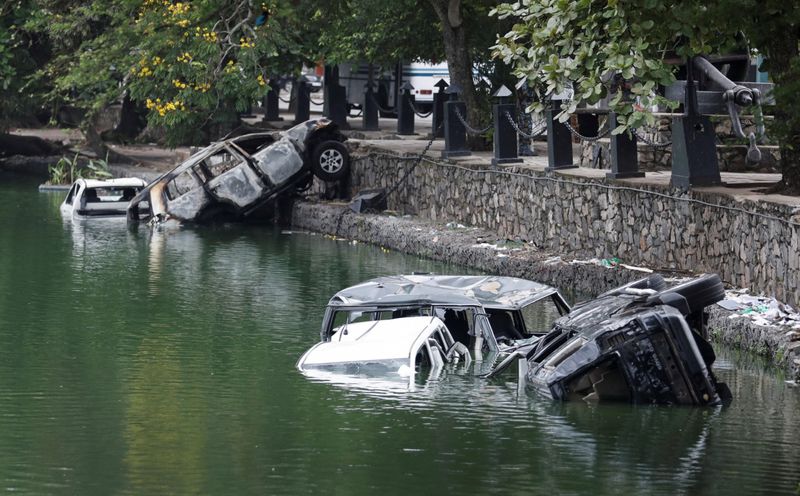
On Monday, police fired tear gas and water cannon to disperse crowds and declared an immediate curfew in Colombo, a measure later widened to include the entire South Asian nation of 22 million people.
Authorities said the curfew will be lifted on Wednesday morning, with government and private offices, as well as shops and schools, ordered to remain shut on Tuesday.
Police and the local human rights commission said they have started separate investigations into Monday’s violence.
“Arrest those responsible for instigating violence irrespective of their political standing,” police chief Chandana Wickramaratne said in an order.
The United Nations condemned the escalating violence, with human rights chief Michelle Bachelet calling on the authorities to prevent further unrest.
“I am deeply troubled by the escalation of violence in Sri Lanka after supporters of the prime minister attacked peaceful protesters in Colombo yesterday May 9 and the subsequent mob violence against members of the ruling party,” Bachelet said in a statement on Tuesday.
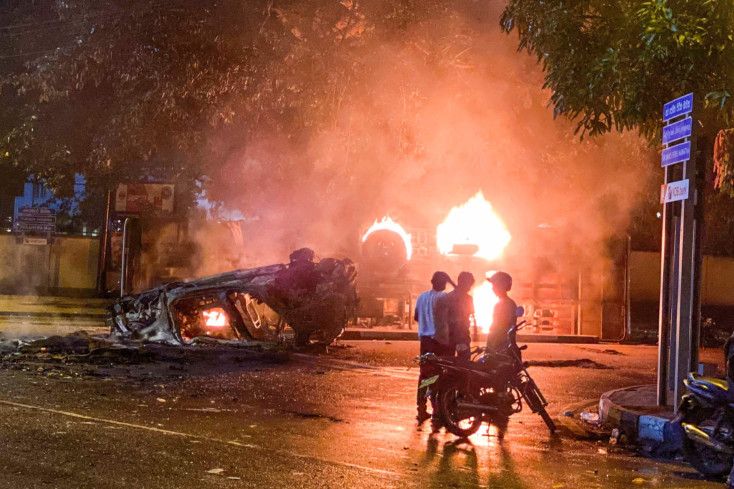
Shot dead
Despite the curfew, there were flare-ups of violence in Colombo and around the country, against both protesters and government supporters.
Angry crowds set alight the homes of at least 41 pro-Rajapaksa politicians, along with some vehicles, while buses and trucks used by the government loyalists were also targeted.
Several Rajapaksa homes were torched in different parts of the country, while a family museum in their ancestral village was trashed including life-size wax figures of their parents.
Outside Colombo, ruling party lawmaker Amarakeerthi Athukorala shot two people - killing a 27-year-old man - after being surrounded by a crowd of anti-government protestors, police said.
“He then took his own life with his revolver,” a police official told AFP by phone.
Athukorala’s bodyguard was also found dead at the scene, police said.
Another ruling party politician who was not named opened fire on protesters, killing two and wounding five in the south, police added.
Doctors at the main Colombo National Hospital intervened to rescue wounded government supporters, with soldiers breaking open locked gates to ferry in the wounded.
“They may be murderers, but for us they are patients who must be treated first,” a doctor shouted at a mob blocking the entrance to the emergency unit.
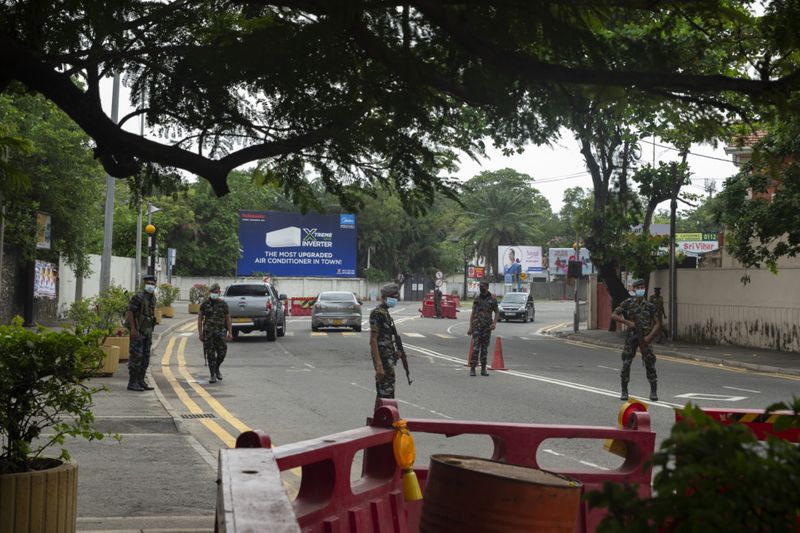
Unity government?
In another sign of rapidly deteriorating security, vigilante groups blocked on Tuesday the main road to Colombo’s airport and stopped all traffic to check for any Rajapaksa loyalists trying to leave the island, witnesses said.
Despite the attack on his residence, Mahinda Rajapaksa’s son Namal told AFP that his father would not flee, describing the surge of national anger against his family as a “bad patch”.
The 76-year-old said he was resigning to pave the way for a unity government.
But it was unclear if the opposition would join any administration with Gotabaya still president.

‘The Terminator’
President Gotabaya Rajapaksa, 72, took office in 2019, wielding executive power over Sri Lanka throughout the Covid pandemic that analysts say helped trigger the current economic crisis.
Unlike his brother Mahinda, who heads the clan and was prime minister until his resignation on Monday, Gotabaya came to power with little political experience to speak of.
Instead, he came from a military background, having been in charge of the army and police throughout Mahinda’s presidency from 2005-2015.
In 2009, he led a brutal government crackdown that crushed the separatist Tamil rebels after decades of civil war.
The bloody final weeks of the conflict ended with, according to UN estimates, the deaths of around 40,000 civilians, who were herded into so-called no-fire zones that were then bombed by the armed forces.
He denies accusations that he was behind death squads that abducted and “disappeared” dozens of opponents in feared white vans.
Dubbed “The Terminator” by his own family, he is feared by foes for his short temper.
The clan leader
Mahinda Rajapaksa, 76, is the head of the clan. He was president for a decade for 10 years, and before that was prime minister in 2004.
Mahinda is adored by the Sinhala-Buddhist majority for crushing the Tamil rebels in the military offensive that ended the civil war.
Rajapaksa has refused an international probe into atrocities allegedly committed during the war. A series of local enquiries have failed to yield either a proper war crimes investigation or prosecutions.
During his rule Sri Lanka also moved closer to China, borrowing almost $7 billion for infrastructure projects — many of which turned into white elephants mired in corruption.
These include an airport almost without planes, a cricket stadium unused to the sound of willow hitting leather and a hi-tech convention centre devoid of conferences.
The centrepiece — and biggest flop — was the Hambantota deep-sea port that had to be leased to China in 2017 for 99 years after Colombo fell failed to keep up with debt repayments for its construction.
Critics say Mahinda also did little to bridge the divide with Sri Lanka’s Tamils after the war. The community is barred from commemorating their war dead and remain largely marginalised.
‘Mr Ten Percent’ —
Then there are other members of the family including Basil Rajapaksa, 71, nicknamed “Mr. Ten Percent” in a BBC interview in reference to commissions he allegedly took from government contracts.
Subsequent administrations failed to prove any charges he siphoned off millions of dollars from state coffers. All cases against him were dropped when Gotabaya became president.
Basil was made finance minister when Gotabaya became president but was jettisoned in mid-April as the president tried desperately to rescue his government.
Also out of the door was Chamal, 79, another sibling who was in charge of irrigation. His son Sashindra was involved in a disastrous ban on chemical fertiliser imports.
Mahinda’s eldest son Namal, 36, who ran the sports ministry and had been touted as a future leader before the crisis, was also dropped.
‘Rajapaksa brand’
With only Gotabaya left in power, Namal told AFP on Tuesday that the family was merely going through a “bad patch”.
Akhil Bery from the Asia Society Policy Institute said Mahinda’s resignation likely signals the end to his time in active politics.
“But the Rajapaksa brand still has support among the Sinhalese population,” Bery told AFP.
“Though much of the blame can be placed on the Rajapaksas now, their successors will inherit the mess, leaving space for the Rajapaksas to remain politically relevant.”
Under Sri Lanka’s political system, even with a new unity government, the president will have the power to appoint and fire ministers as well as judges, and enjoy immunity from prosecution.
Opposition parties said Tuesday they called off unity talks with the government after the outbreak of violence.
But political sources said attempts were underway to arrange an online meeting between the president and all political parties.
The main opposition SJB said they were still considering their options.
“Unless President Rajapaksa steps down, no one - whether the masses in the streets or key political stakeholders - will be appeased,” analyst Michael Kugelman from the Wilson Center told AFP.
The protests came after the coronavirus pandemic hammered the island’s vital income from tourism and remittances, which starved the country of foreign currency needed to pay off its debt.
This forced the government to ban many imports, leading to severe shortages, inflation and lengthy power blackouts.
In April, Sri Lanka announced it was defaulting on its $51 billion foreign debt. It is in talks with the International Monetary Fund for a bailout.


